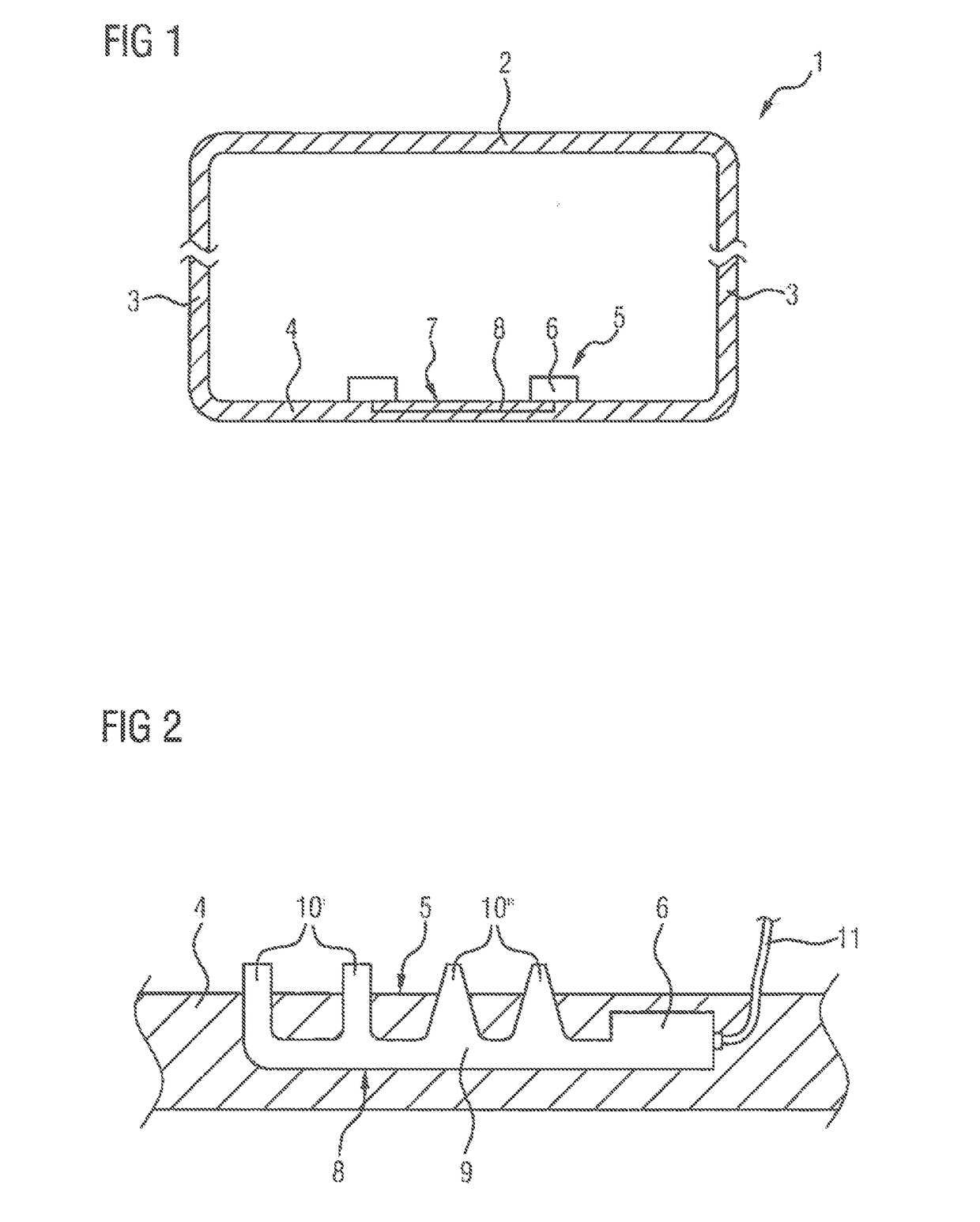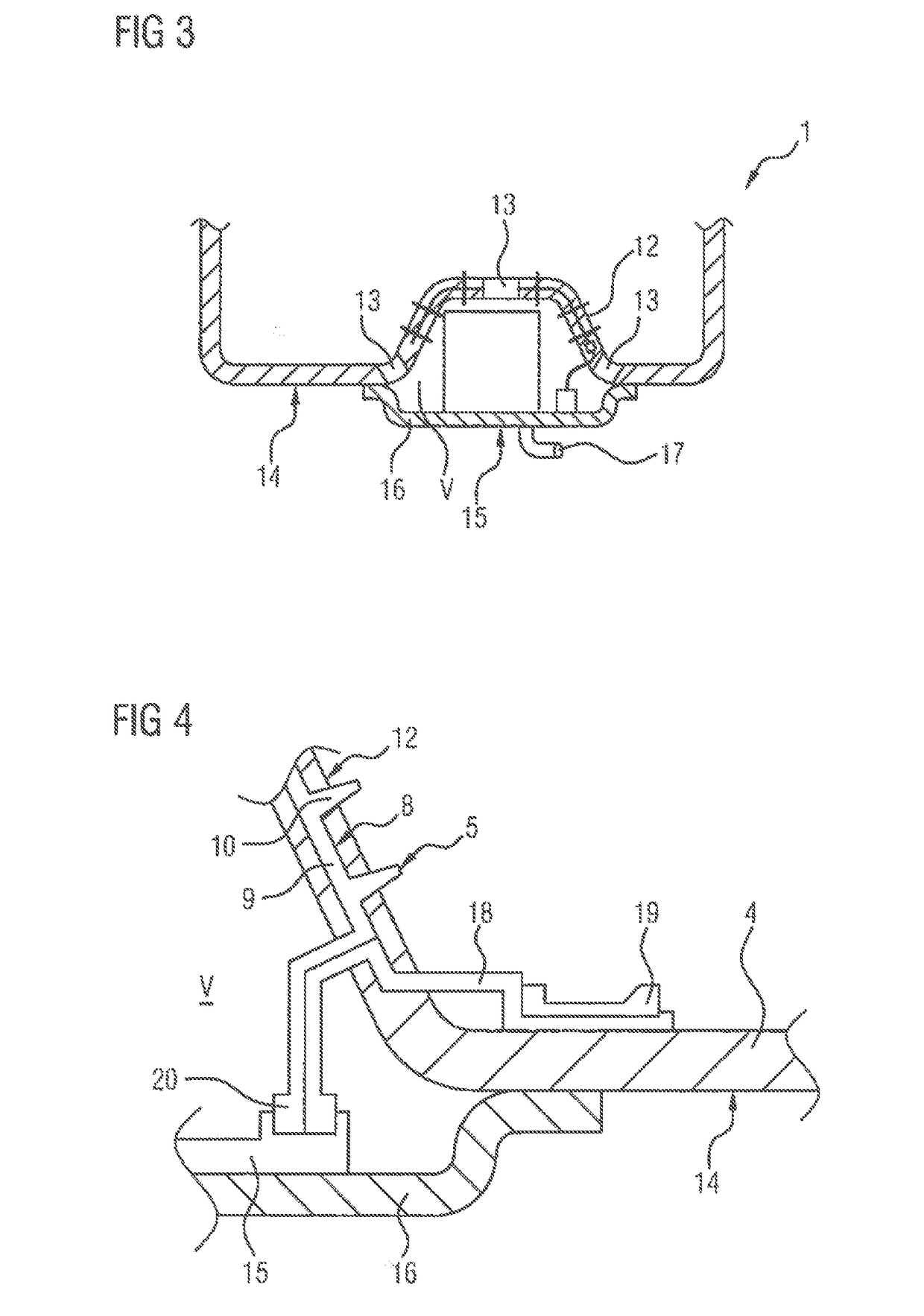Tank system for a reducing agent
- Summary
- Abstract
- Description
- Claims
- Application Information
AI Technical Summary
Benefits of technology
Problems solved by technology
Method used
Image
Examples
Embodiment Construction
[0020]FIG. 1 schematically shows a tank system having a vessel 1, which contains urea solution as the reducing agent. The vessel 1 in the installed position has an upper vessel wall 2, a filling portion (not illustrated) for the reducing agent, lateral vessel walls 3, and a lower vessel wall 4. The lower vessel wall 4 forms the base 7 of the vessel 1. The vessel 1 is composed of plastics. However, it is also conceivable for the vessel 1 to be produced from metal. The lower vessel wall 4 has a heating device 5. The heating device 5 is composed of heating elements 6 which are fastened to the base 7 of the vessel 1, and of a heat conducting structure 8 which, connected to the heating element 6, is disposed in the lower vessel wall 4.
[0021]FIG. 2 shows an enlarged illustration of the lower vessel wall 4, having the part of the base 7 in which the heating device 5 is disposed. The heating element 6 and the heat conducting structure 8 are here disposed in the base 7 of the vessel 1. The h...
PUM
 Login to View More
Login to View More Abstract
Description
Claims
Application Information
 Login to View More
Login to View More - R&D
- Intellectual Property
- Life Sciences
- Materials
- Tech Scout
- Unparalleled Data Quality
- Higher Quality Content
- 60% Fewer Hallucinations
Browse by: Latest US Patents, China's latest patents, Technical Efficacy Thesaurus, Application Domain, Technology Topic, Popular Technical Reports.
© 2025 PatSnap. All rights reserved.Legal|Privacy policy|Modern Slavery Act Transparency Statement|Sitemap|About US| Contact US: help@patsnap.com


